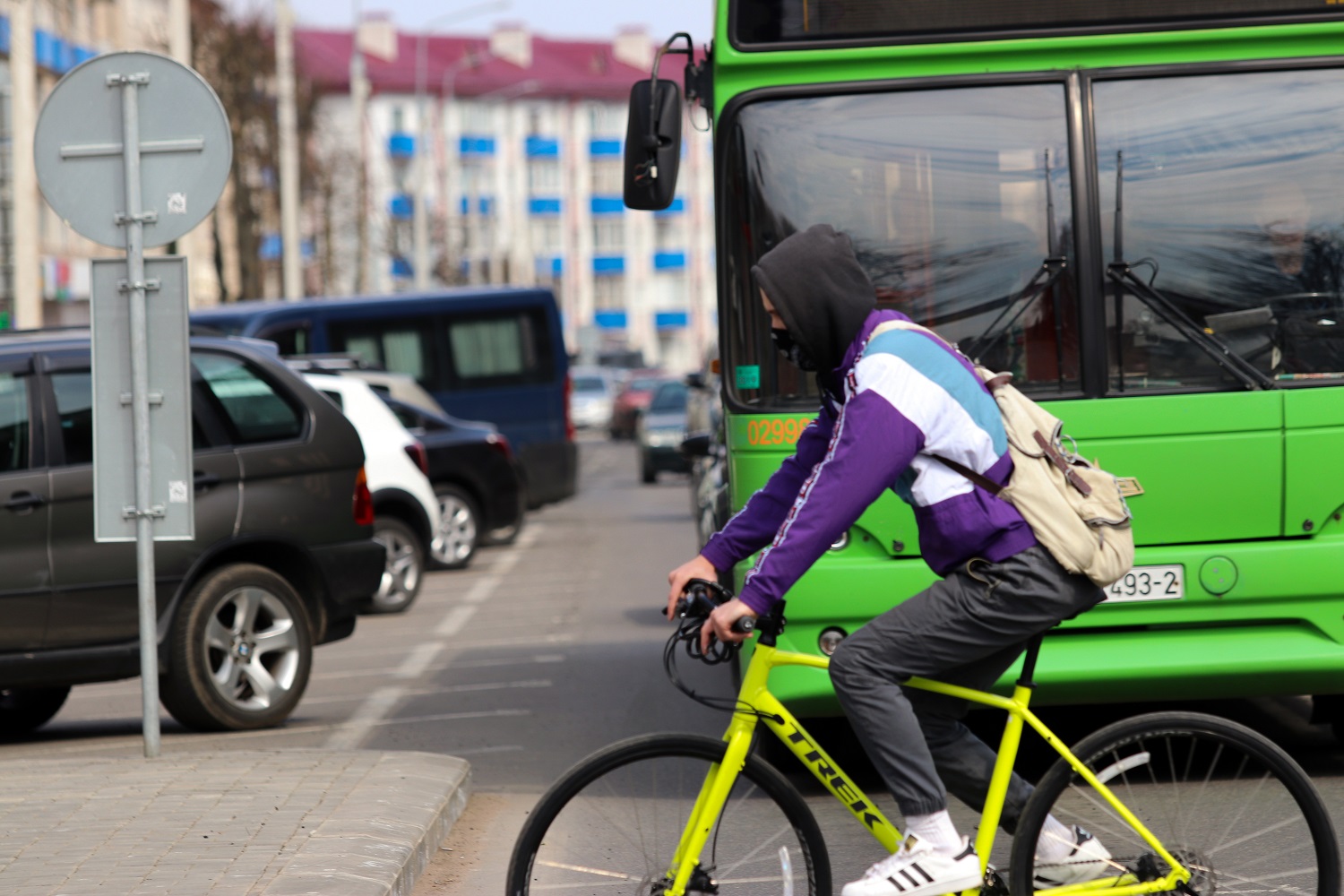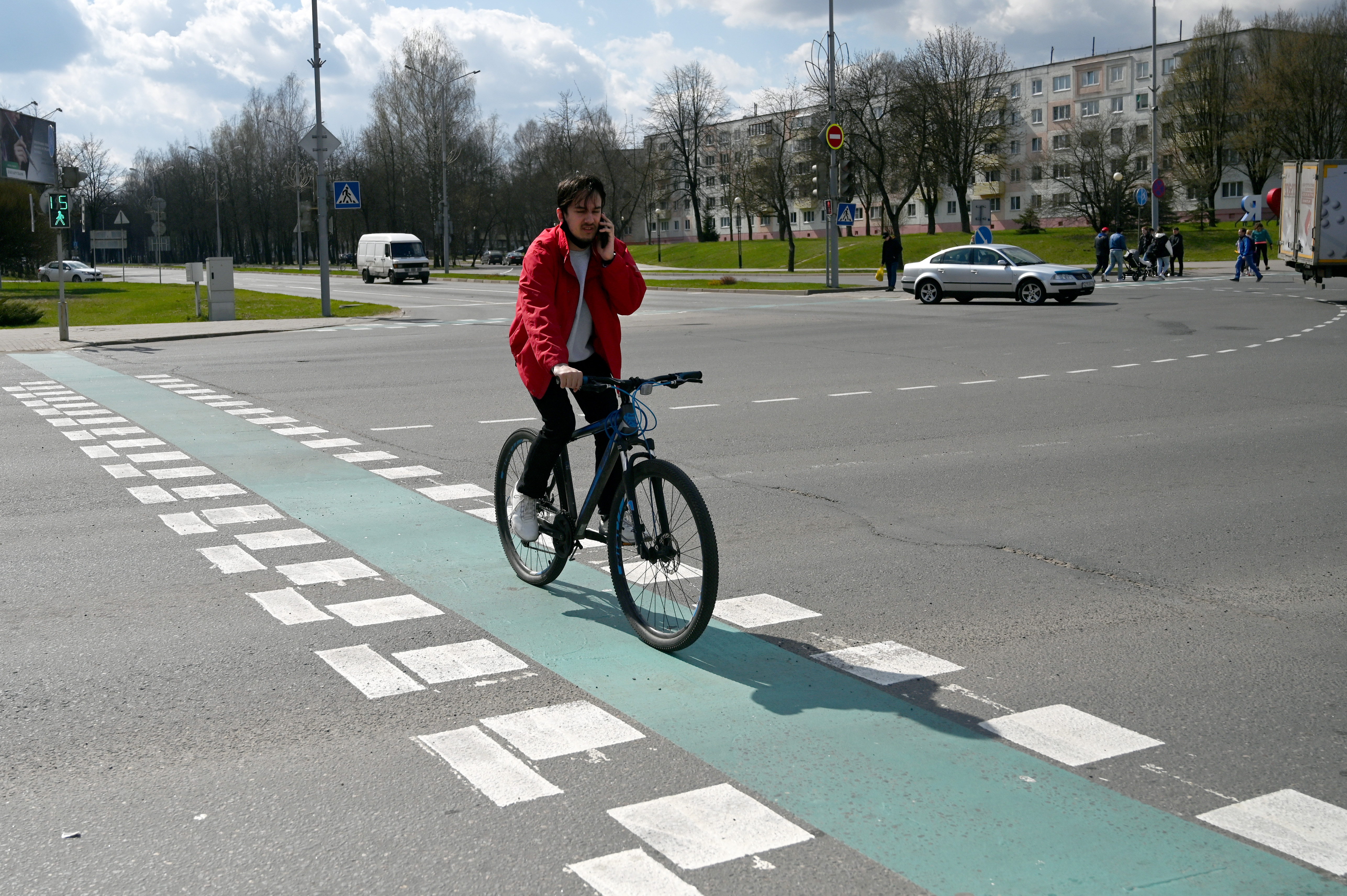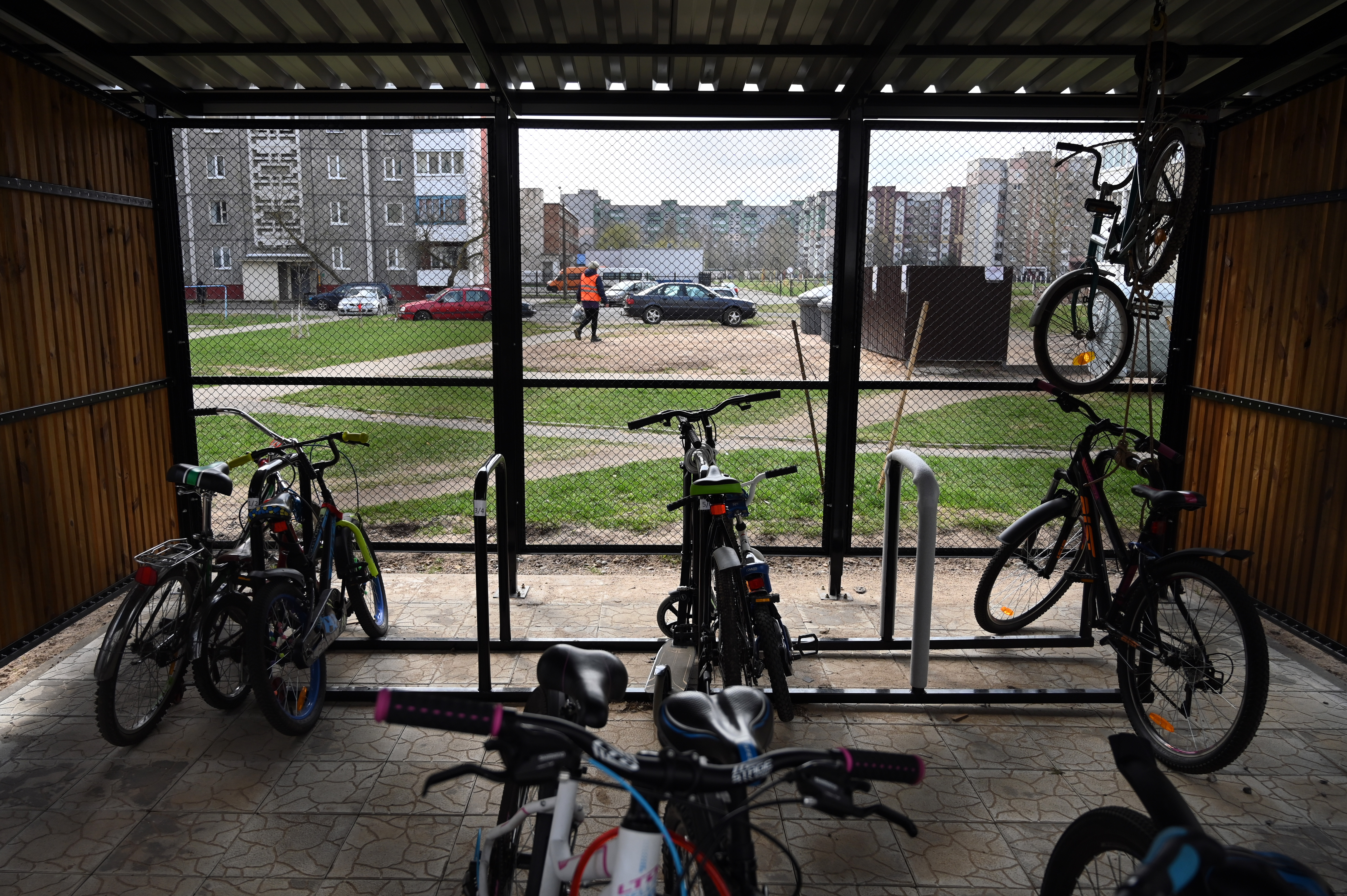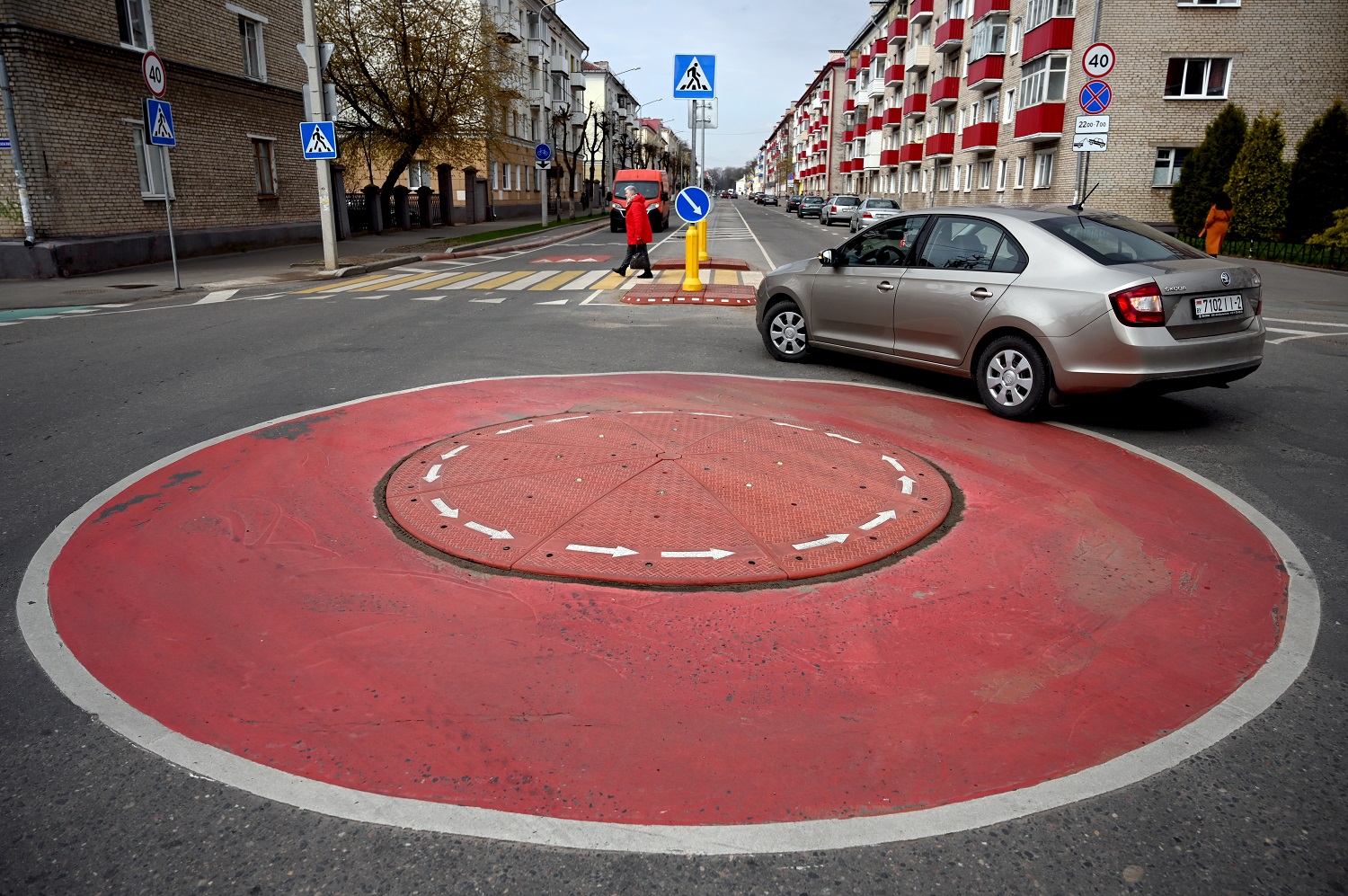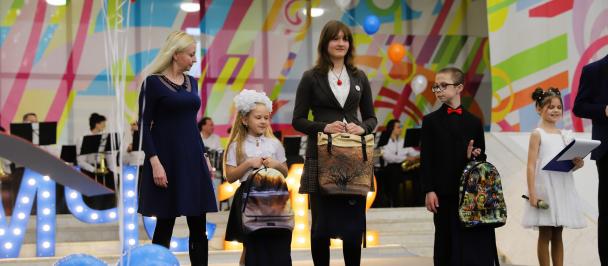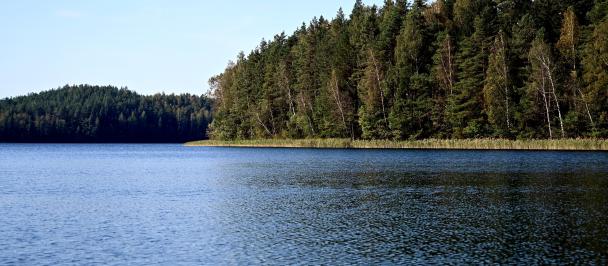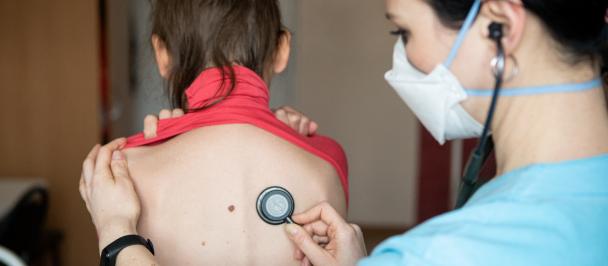Photography: UNDP in Belarus
Green mobility is an integral part of modern urban infrastructure and plays the capital role in urban development plans design. It makes small cities more comfortable and environmentally friendly, offers wide opportunities for new digital technologies, stimulates partnerships and interregional interaction.
“Small towns have a special demand for making their street comfortable and safe for all, with priority given to pedestrians, cyclists and those using green means of transportation,” said Alexander Goroshko, Deputy Minister of Natural Resources and Environmental Protection of the Republic of Belarus, the National Coordinator of the “Green Cities” Project. “Implementation of a parking policy, organization of pedestrian streets and zones, slowing down street traffic are the most effective measures to reduce traffic load in small towns, and also cut harmful emissions, including CO2.”
Photography: Sergei Gapon for UNDP in Belarus
With the support from “Green Cities” project, implemented by UNDP in partnership with the Ministry of Environment of Belarus and financed by the Global Environment Facility (GEF), a new road infrastructure, including facilities for cycling, was constructed in Polatsk and Novopolatsk. Innovative technologies for managing public transport traffic flows were applied.
Preliminary performance analysis of introduced innovations speaks in favor of efficiency of using green mobility in small cities.
A new cycling infrastructure with bike lanes, garages, parking, bike crossings, provides local communities with some significant environmental, social and economic benefits. Using a bicycle to move around the city allows reduce CO2 and harmful emissions, promotes healthy lifestyle, creates favorable conditions for development of local entrepreneurship through expanding bicycle services and repair shops, opening new commercial outlets in pedestrian and bicycle zones.
Optimization of the public transport system, “smart” traffic lights and innovative road markings make moving around safer and more reliable. The greater reliability and accessibility of public transport motivates people to prioritize public transport over private cars, thus reducing the anthropogenic load on the environment.
“Introduction of green mobility in small towns emphasizes key role of cooperation between administration, business, citizens at the municipal and interregional levels,” said Alexandra Solovieva, UNDP Resident Representative in Belarus. “Integrated and inclusive approach to green urban mobility helps strengthen the local entrepreneurial potential, improve public health and air quality, as well as contribute to the socio-economic development of the regions.”
Partnership of all parties is the backbone for sustainability of the achieved results. It is also crucial for opening access to new sources of funding for urban development projects. The Ministry of Environment of Belarus, municipalities and public organizations continue working together to spread the best practices in green urban mobility to other small towns in Belarus

 Locations
Locations